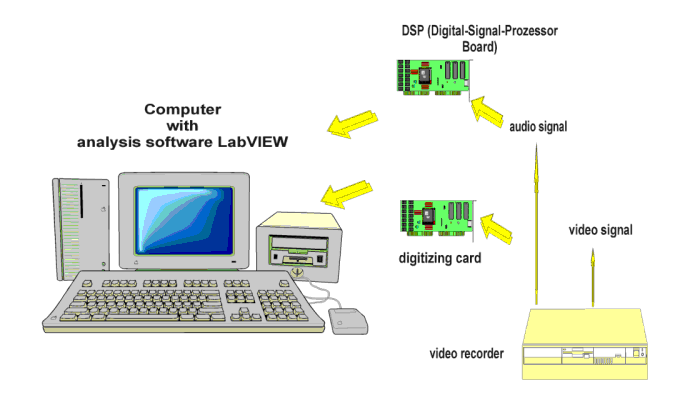
A sound analysis system based on LabVIEW used to characterise domestic pig (Sus scrofa) vocalisations
P.C. Schön, B. Puppe and G. Manteuffel
Forschungsbereich Physiologische Grundlagen der Tierhaltung, Forschungsinstitut für die Biologie landwirtschaftlicher Nutztiere, Dummerstorf, Germany
A sound analysis system based on the program development environment LabVIEW is presented and its capacities are demonstrated using suckling grunts and stress calls of domestic pigs (Sus scrofa) as examples.
LabVIEW represents a versatile tool for the development of sound analysis software including sound processing and sound statistics. Particularly, the increasing need for flexible numerical processing of different acoustic parameters can be considered. LabVIEW offers a wide range of opportunities both for conventional processing and for the development of new applications in bioacoustical analysis. The graphical object oriented language allows programming without special experience because it uses terminology, icons, and theories familiar to scientists and engineers. LabVIEW is available for Macintosh, Sun, HP-UX, Windows 95, Windows NT and Windows 3.1. It can also be used as a teaching tool to gain technical knowledge on signal analysis and signal processing.

Paralleled by behavioural observations, the bioacoustical studies of animals at various levels including the incorporation of techniques that are used in human speech recognition or in technical acoustics are able to reveal the specific meaning of vocalisations. The video signal of the behaviour and the audio signal of the call are fed in parallel to the analysis system and displayed online on the computer screen. The analysis tools for data acquisition and data pre-processing allow the precise separation of the decisive parts of the animal vocalisation for detailed investigation.
For more information please refer to web page http://www.fbn-dummerstorf.de/fb5/schoen/bioacous.htm#Bioacoustic.

Poster presented at Measuring Behavior '98, 2nd International Conference on Methods and Techniques in Behavioral Research, 18-21 August 1998, Groningen, The Netherlands